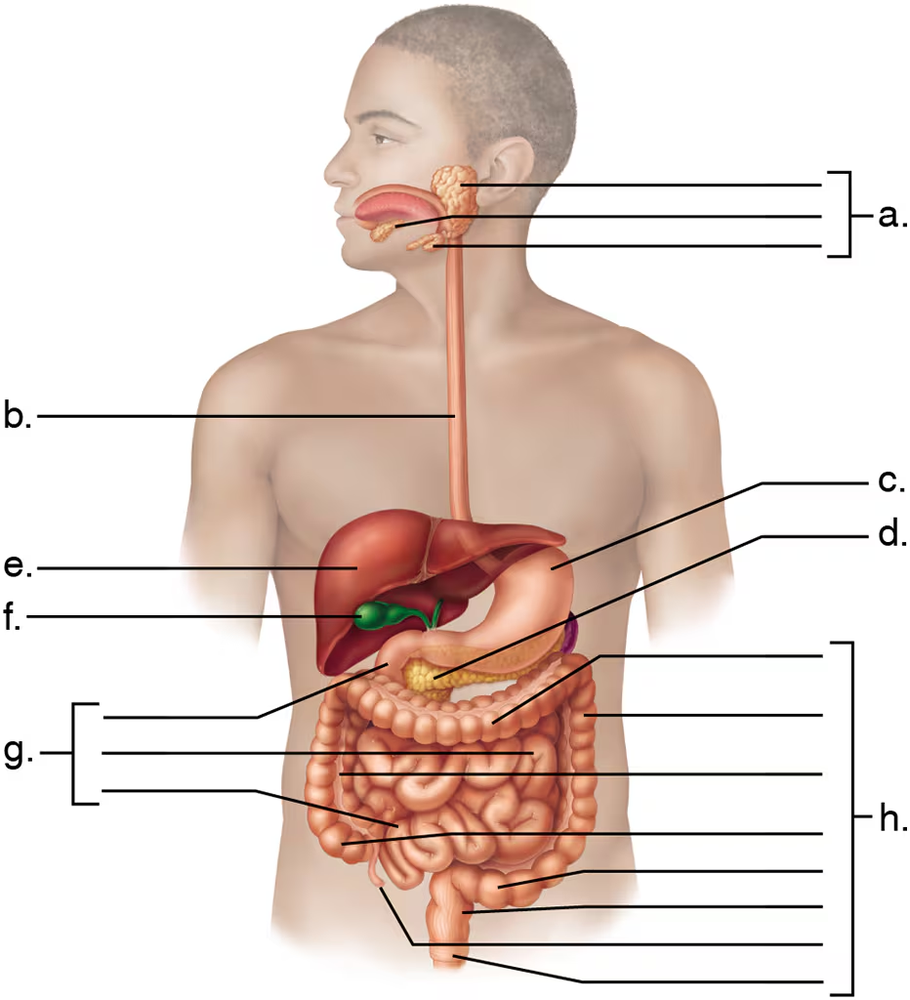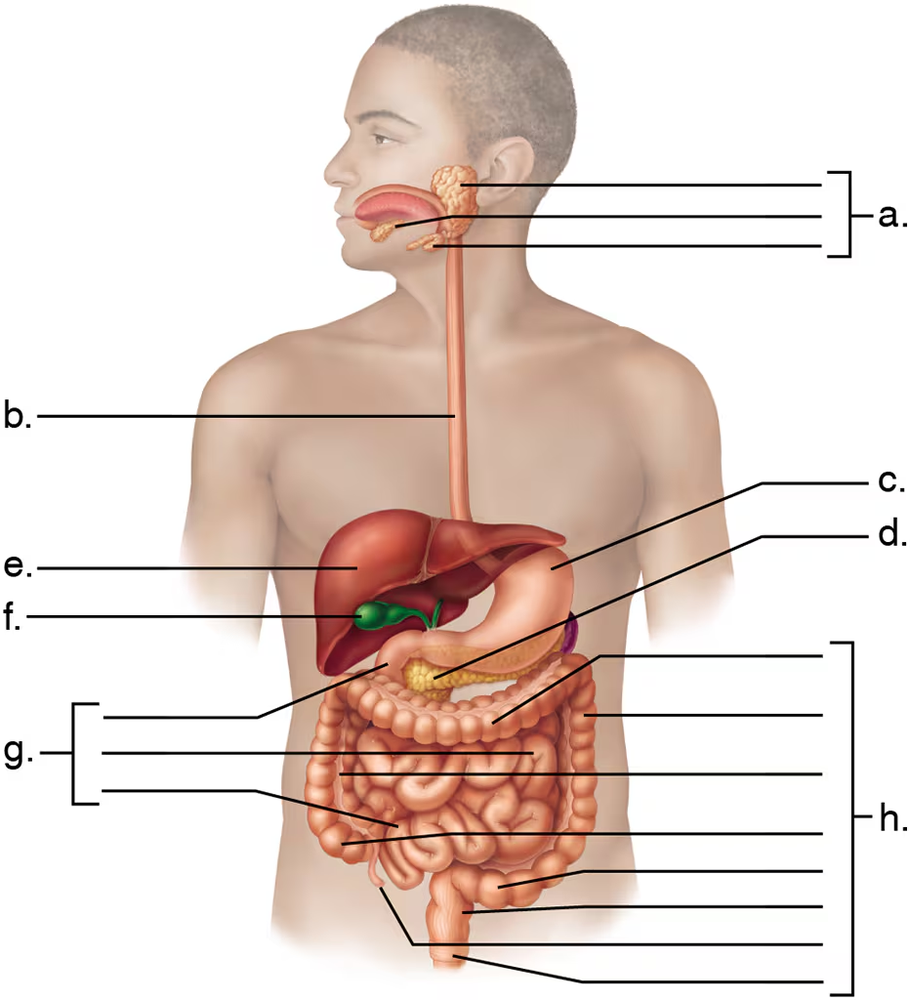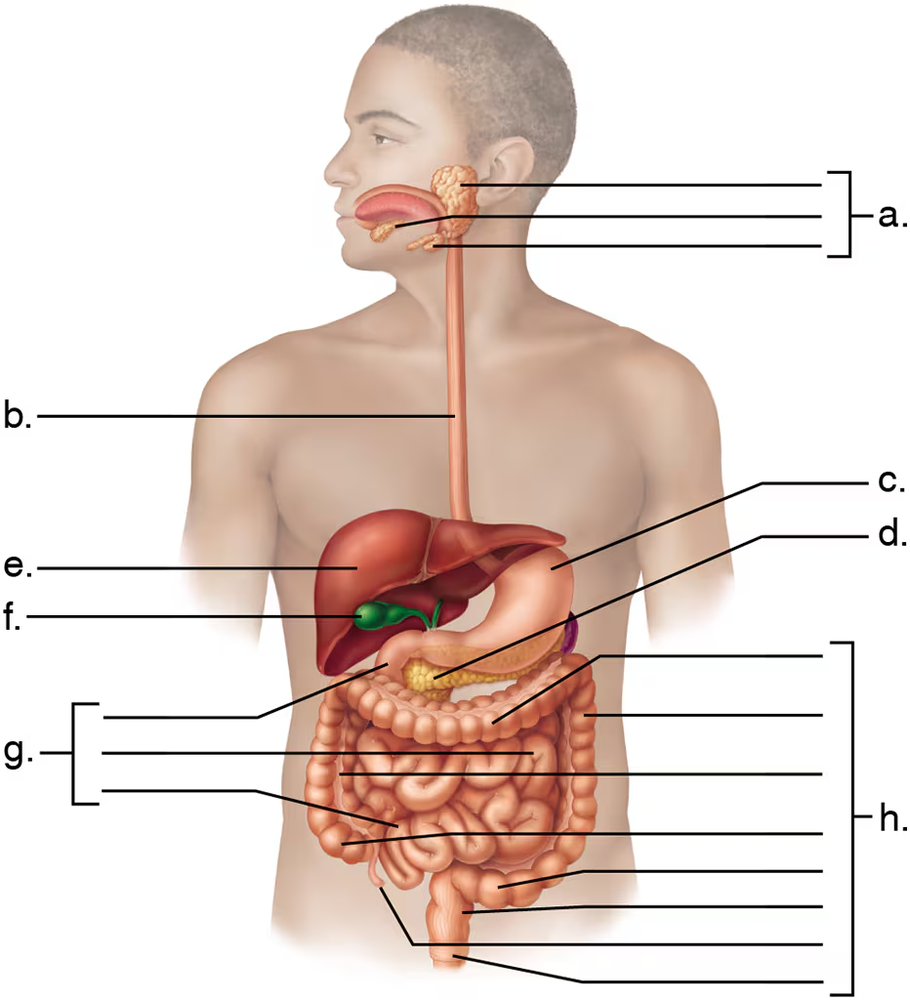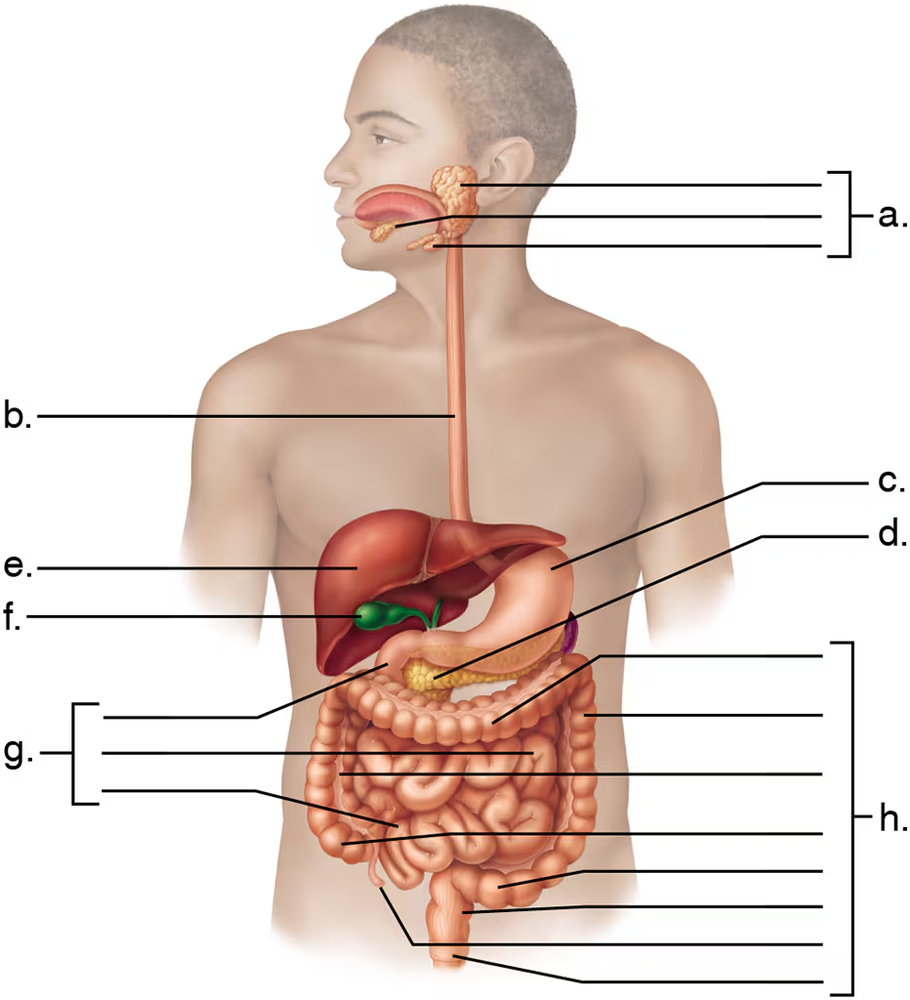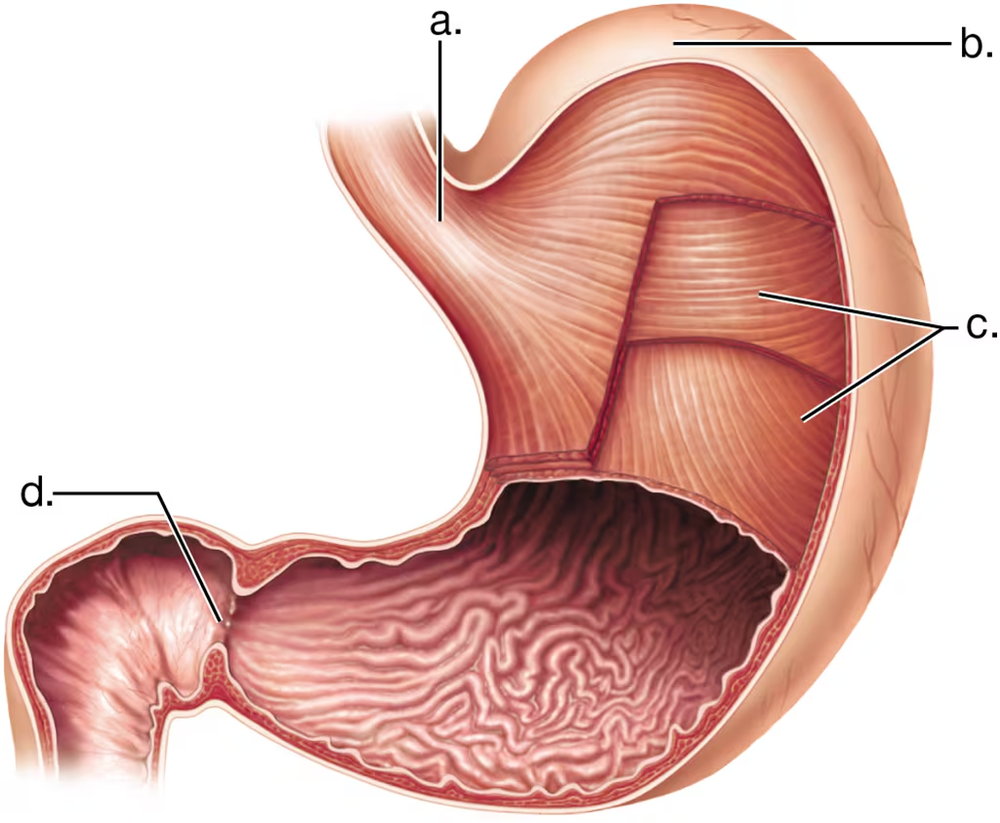 Back
BackProblem 1
More than one choice may apply.
Which of the following terms are synonyms?
a. Gastrointestinal tract
b. Digestive system
c. Digestive tract
d. Alimentary canal
Problem 2
More than one choice may apply.
A digestive organ that is not part of the alimentary canal is the
a. Stomach
b. Liver
c. Small intestine
d. Large intestine
e. Pharynx
Problem 3
More than one choice may apply.
The GI tube tissue layer responsible for the actions of segmentation and peristalsis is the
a. Serosa
b. Mucosa
c. Muscularis externa
d. Submucosa
Problem 4a
Match the letter of the digestive organ shown in the figure with its function.
___ produces bile
Problem 4c
Match the letter of the digestive organ shown in the figure with its function.
___ churning occurs here
Problem 4g
Match the letter of the digestive organ shown in the figure with its function.
___ stores bile
Problem 4h
Match the letter of the digestive organ shown in the figure with its function.
___ segmentation occurs here
Problem 5
More than one choice may apply.
Where in the stomach do the strongest peristaltic waves occur?
Problem 6
More than one choice may apply.
Which of these organs lies in the right hypochondriac region of the abdomen?
a. Stomach
b. Spleen
c. Cecum
d. Liver
Problem 8
More than one choice may apply.
The pH of chyme entering the duodenum is adjusted by
a. Bile
b. Intestinal juice
c. Enzyme secretions from the pancreas
d. Bicarbonate-rich secretions from the pancreas
Problem 16
Bile emulsifies fat. Define emulsify.
Problem 22
A young woman is put through an extensive battery of tests to determine the cause of her stomach pains. She is diagnosed with gastric ulcers. An antihistamine drug is prescribed, and she is sent home. What is the mechanism of her medication? What life-threatening problems can result from a poorly managed ulcer? Why did the clinic doctor warn the woman not to take aspirin?
Problem 24
An anorexic girl shows a high level of acetone in her blood. What is this condition called, and what has caused it?

